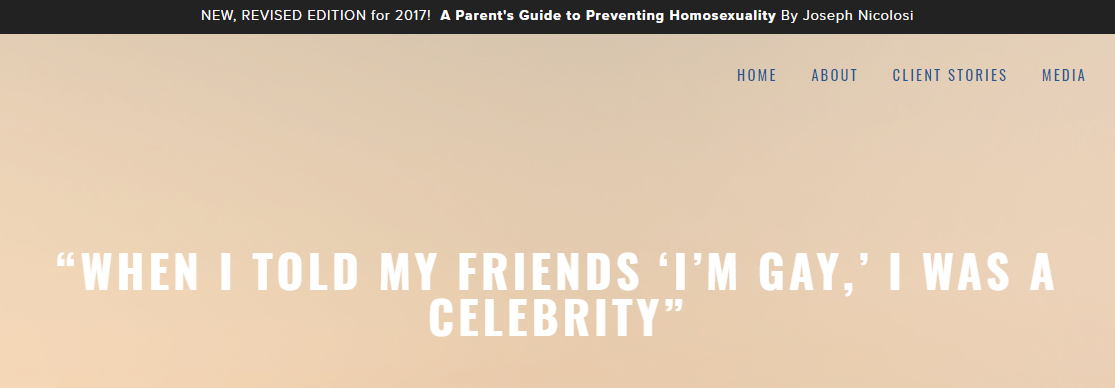The World Professional Association for Transgender Health (WPATH), the decades-old organization that issues the international standards for medical and psychological care for trans people, responded to the media hype over a “study” that purports to have discovered a new pathology it calls “Rapid-Onset Gender Dysphoria” (ROGD), saying ROGD, “is distinct from the gender dysphoria observed in individuals who have previously been described as transgender.” The “study” (such as it is) asked largely anonymous commenters from 3 anti-trans sites1 who claimed to be parents of transgender “youth” (ie, 27-year-olds2) if they thought that when their kids came out as trans, it seemed “rapid” to them. Since these anonymous “parents” claimed coming out seemed to be “rapid,” ROGD as a pathology was born and now, of course, enjoys full Disco-Sexology support. Nevermind 91% of these trans “youth” persisted in being trans3 in this “study,” it’s asserted that ROGD is caught by youth who visit specific websites such as YouTube, Tumblr, and Reddit and/or knows someone who is, in some way, not cisgender. Moreover, the “study” suggests that youth perhaps become trans in order to become popular4.
“In the case of homosexuality, it has over the past couple of hundred years been seen both as a disease itself, and as a course of disease, a contagion which, unless contained, will not only lead to the innocent young becoming homosexual, but will cause even worse diseases.”
– Diseases in the Homosexual Male, 1988

The postulation that kids catch being gay or trans from other youth or various other sources (books, TV, video games, websites, school curriculum, etc.), is not new and is, in fact, a decades-old right-wing notion that’s popular with practitioners of illegal reparative therapies. Sensing a new vehicle to hitch their reparative therapy wagons to, infamous reparative therapy supporters like Kenneth Zucker, have joined together to promote the notion that cisgender kids can rapidly catch being transgender:
There is some evidence that these teens and young adults are arriving at a belief that they are transgender after spending time on transgender sites online, and/or in conjunction with one or more peers coming out in the same time frame. This raises the concern that there may be elements of social contagion at work.
The above quote comes from the newly minted “Pediatric and Adolescent Gender Dysphoria Working Group” (PAGDWG). Members of this group include the internet troll Oren Amitay, a sexologist who refuses to debate her public dissemination of misinformation, a sexologist who has a history of “harassing” people who disagree with him, and those who pathologized gender nonconformity in youth by mixing them into the same diagnostic population as those with phenotype dysphoria under the now-defunct DSM-IV GID designation.
To clarify the actual science regarding gender dysphoria, WPATH issued the following statement regarding ROGD:
The World Professional Association for Transgender Health Board of Directors reaffirms the deliberative processes by which diagnostic entities and clinical phenomena are classified and established. These academic processes reside within the respective professional medical organizations and are led by workgroups formed by expert scientists, clinicians, and stakeholders, often over long periods of time, with high levels of scientific scrutiny of the evidence-based literature. The term “Rapid Onset Gender Dysphoria (ROGD)” is not a medical entity recognized by any major professional association, nor is it listed as a subtype or classification in the Diagnostic and Statistical Manual of Mental Disorders (DSM) or International Classification of Diseases (ICD). Therefore, it constitutes nothing more than an acronym created to describe a proposed clinical phenomenon that may or may not warrant further peer-reviewed scientific investigation.
At present, WPATH asserts that knowledge of the factors contributing to gender identity development in adolescence is still evolving and not yet fully understood by scientists, clinicians, community members, and other stakeholders in equal measure. Therefore, it is both premature and inappropriate to employ official-sounding labels that lead clinicians, community members, and scientists to form absolute conclusions about adolescent gender identity development and the factors that may potentially influence the timing of an adolescent’s declaration as a different gender from birth-assigned sex.
WPATH encourages continued scientific exploration within a culture of academic freedom, not censorship. We acknowledge that adolescent gender identity development and the factors influencing the timing of anyone’s gender declaration are multifactorial and that all persons—especially adolescents—are deserving of gender-affirmative evidence-based care that adheres to the latest standards of care and clinical guidelines.
WPATH also urges restraint from the use of any term—whether or not formally recognized as a medical entity—to instill fear about the possibility that an adolescent may or may not be transgender with the a priori goal of limiting consideration of all appropriate treatment options in accordance with the aforementioned standards of care and clinical guidelines. Comprehensive research and education on the facts about transgender peoples’ lives and healthcare needs are necessary for both youth and guardians—and inexperienced providers—to productively address the current disparity gaps experienced by this sub-population of individuals.
- “In recent years, a number of parents have been reporting in online discussion groups such as 4thwavenow in the US (https://4thwavenow.com) and Transgender Trend in the UK (https://www.transgendertrend.com) that their adolescent and young adult (AYA) children, who have had no histories of childhood gender identity issues, experienced a rapid onset of gender dysphoria.
- “The adolescents and young adults (AYAs) described by their parents were… an average current age of 16.4 years (range, 11–27 years).”
- The study (n=256) claimed that 22 were unknown if they were still trans, which gives us a known value of 234. Of those who are known, 213 (91%) say they persisted in being trans.
- “Where popularity status and activities were known, 60.7% of the AYAs experienced an increased popularity within their friend group when they announced a transgender-identification”
